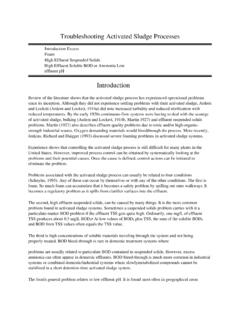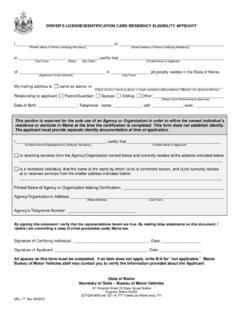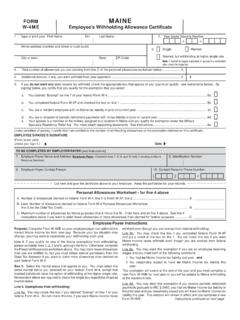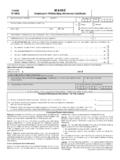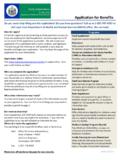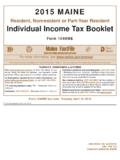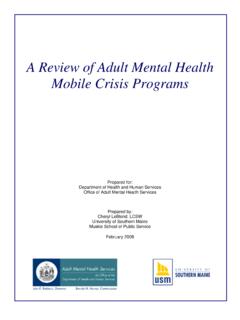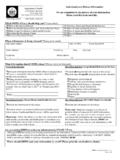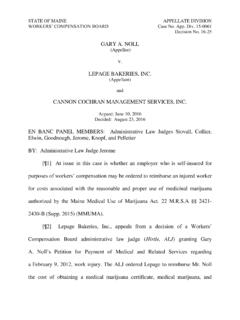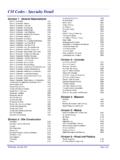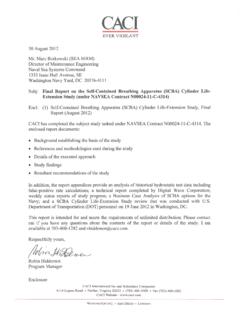Transcription of MOTOR VEHICLE - Maine
1 Maine MOTOR VEHICLE INSPECTION MANUAL Maine STATE POLICE TRAFFIC SAFETY UNIT 20 STATE HOUSE STATION REVISED 08-29-13 TELEPHONE 624-8939 Inspection Manual Executive Summary Maine DEPARTMENT OF PUBLIC SAFETY Maine STATE POLICE CHAPTER ONE - Maine MOTOR VEHICLE INSPECTION RULE EXECUTIVE SUMMARY The MOTOR VEHICLE Inspection Program has been in existence for over 65 years. The primary goal of this safety program is the regulation and enforcement of the state s 2,600 inspection stations and over 8,000 licensed inspection technicians. The Maine MOTOR VEHICLE Inspection Manual includes the formal rules governing many facets of the program, as well as reference guides and other documents that may be helpful for the automotive professional. These rules include the application process for licensure, the responsibilities of inspection technicians and stations, and the safety inspection standards and criteria for the inspection of a MOTOR VEHICLE , motorcycle, commercial VEHICLE , school bus, or trailer.
2 Prior to this effort, the last revision of the rules was in 2006. Since that revision, automotive technology and the industry have seen considerable change and growth. Representatives from the industry and our personnel have noted numerous inconsistencies, omissions, obsolete material, and required additions or clarifications within the current manual. Several legislative actions and subsequent statute changes needed to be reflected in rule. The current rules are a product of a project that began in early 2012. Once the clear need for amended rules was identified, the Maine State Police MOTOR VEHICLE Inspection Unit spent countless hours modifying the manual to reflect our dedication to safety related inspection items and did away with rules that lacked a true safety nexus.. Resources utilized for this work include; Federal MOTOR VEHICLE Safety Standards, Federal MOTOR Carrier Safety Regulations, applicable Maine statute, National School Bus Standards, National Highway Traffic Safety Administration studies, American Association of MOTOR VEHICLE Administrators (AAMVA) studies and Model Policy On Periodic Safety Inspections.
3 The final rule, as adopted represents the product of this process and the input from people from a wide variety of groups with interest and expertise in the areas of automotive technology, safety, and law enforcement. The overall spirit and intent of these proposed rules is to update and clarify terminology, simplify language, clarify program practices and policies wherever possible, and to reflect current industry norms and practices. It was also our intent to minimize any fiscal impact to current licensees, and to be cognizant of the realities faced by many smaller businesses. It is with this realization that we have endeavored to grandfather existing licensees where possible, and to use an incremental approach to making change within the industry. Inspection Manual Executive Summary Although a complete review of the rule is recommended for thorough understanding, the following represents a summary of the changes in rule: Updates language and terminology throughout the manual.
4 Definition of a parking brake modified for three wheeled vehicles to include the use of a lever or foot pedal lock to hold pressure on the primary braking system. Clarify licensees are responsible for the actions of their employees, including but not limited to, substandard inspections. Licensed facilities must display their hourly rate. Commercial stations must display their billing increments. For example 15 minutes, 30 minutes or one hour minimum. Public stations must be open for at least 16 hours per week fleet stations must have 10 vehicles registered to the company or the owner. Proof may be required. Order forms are no longer required to be under lock and key. The ban on tar paper as a construction material removed. The ban on unrelated items in the station removed.
5 Requirement that stations be heated is removed. The requirement that stations have at least 400 sq. feet of workable space has been removed. Headlight aiming machine no longer required for Inspection Stations. A technician may use their education, training and experience to determine if the headlights are aimed properly. Clarify that only A and E stations are required to have a lift. A gas cap pressure tester for Cumberland County is required only as long as statute requires it. The electronic equivalent is acceptable for the requirement of any manual or reference material. School Bus Stations are no longer required to have a copy of the Uniform School Bus Standards. Stations are no longer required to have portable lights. Class D stations can now elect to only inspect trailers.
6 Historically they had to be engaged in the sale of trailers to elect this option. All Class A vehicles, regardless of use must pass a Class A Inspection. If the VEHICLE is10,001 or more pounds and engaged in commerce then the VEHICLE must also pass a Class D inspection. Trailers and semi-trailers that are required to be inspected must undergo a commercial (Class D) inspection. This may be done at a Class A station if the trailer is not equipped with air brakes. Technicians are no longer required to check the headlight aim specifications for the VEHICLE being inspected. Inspection Manual Executive Summary Fuel restrictor pipe does not need to be inspected any more. Inspections stickers may now be mailed to an address other than the Inspection Station s business address, when approved by the Unit.
7 Motorcycle Inspection Stickers shall be affixed to the registration plate. Optional until March 1, stations must photocopy their sticker stubs before sending them into the state and must keep a copy at their place of business for 2 years. Exceptions can be made for an approved in-house tracking system by contacting this Unit. Station licenses shall be good for two years from the date of issuance. Hearings will be held before the Chief of the Maine State Police or by his or her designee. Clarify that all vehicles must have met the Federal MOTOR VEHICLE Safety Standards, EPA Pollutant requirements and NHTSA crash testing at the time of manufacture to pass a Maine inspection. Unless the VEHICLE is otherwise exempted by law. CLASS A CHANGES Gear selector indicator no longer required to function.
8 Any malfunction indicator light required to be inspected must illuminate properly. An ABS light that remains on is a cause for rejection. Allow for no pedal reserve on parking brakes that are designed that way from the manufacturer. Brake linings can t be seen during a visual inspection, therefore the requirement that the brake lining must make proper contact with the drum is removed. The requirement to check and see if the brake fluid is contaminated has been removed. Brake safety tubing may be joined with any SAE or DOT approved fittings now. New rejection for vehicles that have brake pads that are binding or if the slides are frozen. Allow the rear door latches of cruisers to be disabled. Door handles can be removed to create a smooth appearance as long as there is a mechanical method of opening the door from the inside.
9 Clarify that if the hood latch fails to operate properly, the VEHICLE shall only be rejected if the hood is not secured or in danger of opening during operation. Remove Reject VEHICLE if any seat has springs or protruding parts. Allow mail carrier vehicles and authorized emergency vehicles to have air bags disabled if in the opinion of the technician the alteration is necessary. Authorized Emergency Vehicles are defined by Title 29-A 2054. Remove Reject VEHICLE if any covering or discoloration affects the original color or reduces the visibility of the registration plate. Inspection Manual Executive Summary Allow for adequate repairs and patches to exhaust systems. Allow flex pipe in exhaust systems. Catalytic converters are required on 1982 and newer models. All vehicles originally equipped with a converter, must have one regardless of its age.
10 Technicians are now allowed to use their discretion to determine if a windshield s defects, cracks (6 inches or less) or cloudiness obstructs the operator s view of the roadway. Rejection is not mandatory if the technician feels the defect isn t a vision obstruction. Clarify that windows behind the B-post can have unlimited tint. Windshield wipers no longer need to be of the original size. Only windshield wipers must function. Rear window and headlight wipers are no longer required to function. Windshield washing systems are no longer required to function. Dump trucks, ambulances, cube vans and other similar vehicles with a rear obstruction are no longer required to have an inside rearview mirror. Technicians can now use their education, training and experience to determine if a mirror defect obstructs the operators view of the road.
